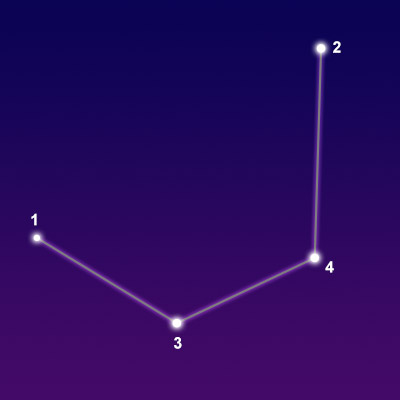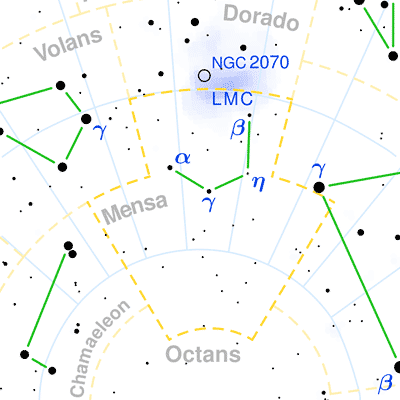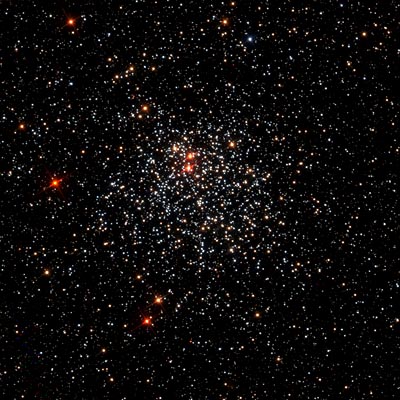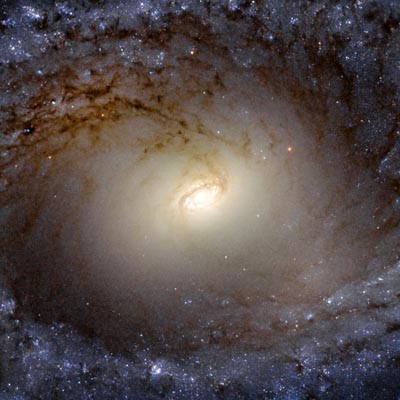Pronunciation:
(MEN-suh)Abbreviation:
MenGenitive:
MensaeRight Ascension:
5 hoursDeclination:
-80 degreesArea in Square Degrees:
153Crosses Meridian:
9 PM, January 30Visible Between Latitudes:
0 and -90 degreesThe constellation Mensa, the table mountain, is located in the southern hemisphere of the sky. It is the second southernmost constellation and cannot be seen in most of the northern hemisphere. It is visible at latitudes south of 5 degrees from May through July. It can best be seen in northern latitudes in January. It is a small constellation that covers an area of only 153 square degrees. It ranks 75th in size among the 88 constellations in the night sky. It is bordered by Dorado to the north, Hydrus to the northwest and west, Octans to the south, Chamaeleon to the east, and Volans to the northeast.
There are no myths associated with Mensa. It is one of 14 southern constellations named by the French astronomer Abbé Nicolas Louis de Lacaille in the 18th century. The name means “the table” in Latin. Lacaille named it to commemorate the table mountain near his observatory in Cape Town, South Africa. Lacaille originally named the constellation Montagne de la Table on his planisphere in 1756. He later Latinized it to Mons Mensae for the second edition in 1763. The name was later shortened to Mensa by British astronomer Francis Baily at the suggestion of John Herschel. The constellation is depicted as a mountain with a flattened top.

points of interest below © Sea and Sky

© Torsten Bronger CC BY-SA 3.0
Beta Mensae
Gamma Mensae
Eta Mensae
N/A
N/A
N/A
Yellow Giant Star
Orange Giant Star
Orange Giant Star
5.30
5.17
5.47
Mensa is one of the faintest constellations in the sky. It contains no stars brighter than magnitude 5. The brightest star is Alpha Mensae with a visual magnitude of only 5.09. It is a yellow dwarf star located 33 light years from Earth. The second brightest star is Gamma Mensae with a magnitude of 5.17. It is an orange giant star that lies approximately 102 light years away. Beta Mensae is the third brightest star with a magnitude of 5.30. It is a yellow giant star located about 640 light years from our solar system.
Mensa contains no Messier objects but does contain part of the Large Magellanic Cloud, or LMC. The LMC is an irregular galaxy located outside our Milky Way Galaxy. It is the third closest galaxy to our own and is one of the few galaxies that can be seen with the naked eye. The rest of the LMC is located in the constellation Dorado. Other deep-sky objects in Mensa include an open star cluster called NGC 1987 and a spiral galaxy known as IC 2051. Both of these objects are extremely dim and can only be seen with a large telescope.

the Hubble Space Telescope

© ESA/Hubble / CC BY 4.0



